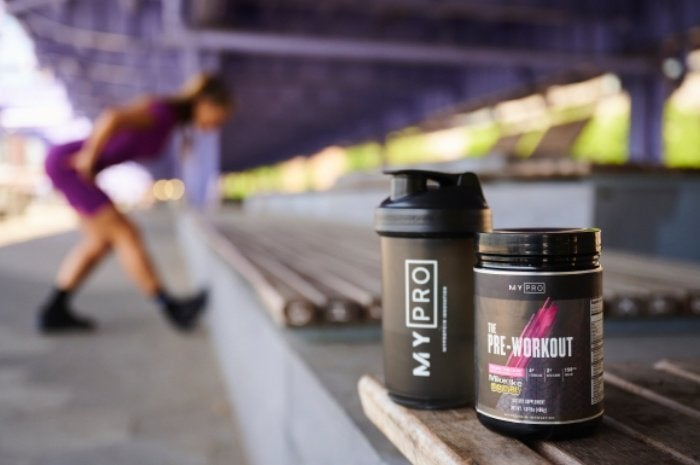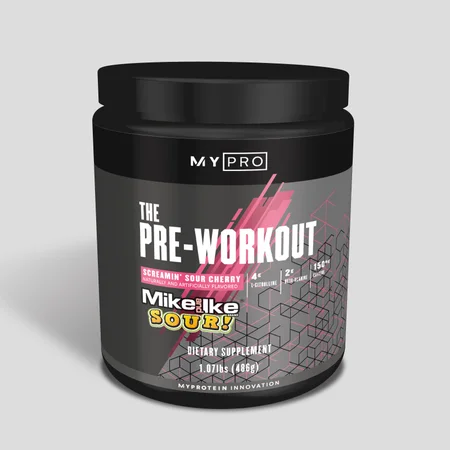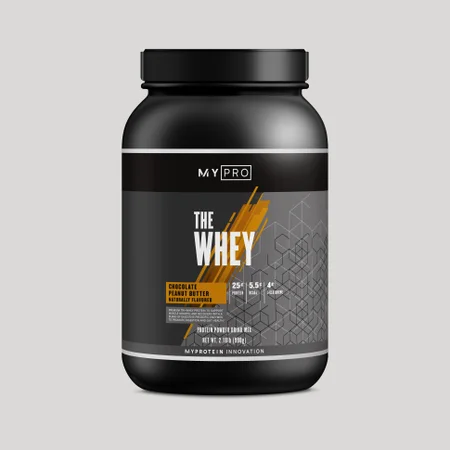
Creatine is one of the most well-researched supplements on the sports nutrition market. It is therefore very popular among bodybuilders and has proven benefits to support endurance and recovery. However, one important thing when supplementing with creatine is the creatine cycle, although this is something that is often ignored by those taking it. Understanding the creatine cycle is vitally important to maximize the benefit of supplementing with creatine.
Understanding Creatine
What does creatine do?
Creatine is used in the body to make energy for muscles. 95% of the body's creatine stores are found in skeletal muscle1.
Creatine speeds up the natural process of how our bodies produce Adenosine Triphosphate (ATP). ATP is used up and quickly depletes during high-intensity exercise.
By supplementing creatine, you can increase the ability to store more, meaning that more ATP can be produced during exercise.
Your muscle tissue stores creatine as phosphocreatine. Phosphocreatine synthesizes during high-intensity exercises, such as lifting weights, to provide your muscles with extra energy.
Creatine pulls water into your muscle cells, increasing protein synthesis. It is not a provider of extra energy in the same way as boosters like caffeine and glucose, but increases your reserves, thus allowing you to work harder for longer – therein lies the gains.
Creatine works as a backup source of energy and helps improve strength and muscle mass over time.
What are the benefits of taking creatine?
Creatine has been shown to improve exercise performance, disorders of creatine metabolism or transport, muscle strength and mass, and age-related muscle loss (sarcopenia)1. The primary reason athletes take creatine is to build muscle.
Creatine can have many positive health effects and has been shown to improve neurological and cognitive function. In older adults, creatine has been linked to fatigue resistance and increased strength, muscle mass, bone mineral density, and performance of activities of daily living1.
Finally, creatine has even been shown in several studies to have a positive effect on mood. According to the Journal of the International Society of Sports Nutrition, creatine has been shown to improve mood and alleviate symptoms of depression in adolescent females2. Additionally, another study demonstrated that creatine boosted mood in patients with Parkinson's Disease3. Creatine was also shown to reduce mental fatigue in healthy individuals and improve mood and reduce fatigue in sleep-deprived individuals in a clinical trial published in the Journal of Psychopharmacology4.
What does creatine do for the body?
Creatine is proven to work and anything that is proven to help increase muscle mass and energy is going to be a very popular supplement. When someone first takes creatine alongside regular training and good nutrition they will notice an increase in weight and strength. Signs of improvement are awesome, but they can also lead to abuse when using creatine.
How Much Creatine Should You Be Taking?
Before we can understand the importance of the creatine cycle, it is firstly important to understand how much creatine you should be consuming. The recommended daily amount of creatine ranges from between 5 g to 20 g. This means you should not be exceeding 20 g of creatine, which many people using creatine do on a daily basis.
When Should You Take Creatine?
Creatine can be taken pre and/or post-workout. Taking creatine post-workout can help provide your muscles with energy, which can help you to work out harder, for longer. Doing this will break down more muscle fibers and with sufficient recovery, lead to more growth. So you could take 5 g before your workout and 5 g after to help aid performance, recovery, and growth. It really is up to you when you choose to take it provided you stay within the recommended daily dosage.
Is taking creatine safe?
Taking creatine is currently considered safe and ethical5. When taken in appropriate doses, creatine is likely safe to take for up to five years. And just like with any supplement, you'll want to ensure you choose a creatine that follows recommended manufacturing practices and goes through third-party testing to ensure quality, like Myprotein's Creatine Monohydrate Powder6.
What are the negative effects of creatine?
According to the research, there are no proven negative health effects for healthy individuals when taking creatine, both short and long-term. The health risks demonstrated applied only to those who were already diagnosed with specific health conditions like bipolar disorder or renal health disorders. For the general population, there are no known negative side effects of supplementing with creatine5.
So, What is the Creatine Cycle?
If you've been taking creatine for longer than 2 months, then you do not understand the creatine cycle. When taking creatine there are some very important things to understand.
The Loading Phase
When you begin your creatine cycle most people will undergo the loading phase. This means that you consume 20 g of creatine a day. The best way to do this is to take 10 g pre-workout and 10 g post-workout, normally added to your post-workout protein shake.
The loading phase lasts 1 week and the aim is to flow your body and muscles with creatine to promote a quicker response to see benefits and gains faster.
You do not have to take part in the loading phase, but if you stick to consuming just 5 g to 10 g a day, then it will take longer for you to see results, so the loading phase can be a great way of helping you to see results quicker.
The Creatine Cycle
So you have done your 1-week loading phase, now it is time to cut back on your daily intake. After the loading phase, you should drop to consuming 5 g to 10 g per day. You should continue doing this for another 7 weeks. This means in total you have been supplementing with creatine for a total of 8 weeks.
Then it is important to stop taking creatine. You should pause your creatine supplementation for anywhere between 7 to 14 days (preferably 2 weeks), before beginning again to take creatine.
Why Do You Need To Stop Taking Creatine?
I know it seems strange. Creatine is working wonders for you. Your muscles are growing and you're putting on mass, so why stop taking it?
There is a very good reason for it though. Taking creatine for an extended period of time, meaning longer than 8 weeks, lessens the positive effect creatine has on your body. Essentially it becomes pointless to continue to supplement with creatine.
Creatine will remain in your system as you've been taking it for 8 weeks, but allowing yourself a gap means when you return to your creatine cycle you will see greater benefits.
Should You Cycle Your Creatine Supplementation?
The answer is: Yes. It may seem counterintuitive to stop taking something which has a positive impact on your training, but it is necessary to continue to reap maximum benefit from this supplement. Pay attention to the recommended daily amount and when using creatine keep track of your start date and work out your end date, so you know when to end your creatine cycle.
Take Home Message
After reading this article you should now know how to get the optimal benefit from creatine supplementation. Creatine really does work and if you want to put on mass and increase endurance then it really should be something you're taking. With this knowledge and understanding, you now know to stick to the creatine cycle!
There are a number of different Creatine products, check them out

Creatine Pills vs. Powder | Which Is Better?
Creatine pills vs. powder and everything you need to know about the supplement. ...

What is a Creatine Cycle?
Breaking down the creatine cycle and how to properly take the supplement for bes...

Creatine HCL vs. Monohydrate | Which Is Better?
Comparing creatine monohydrate to creatine HCL, what's the difference and which ...

- U.S. National Library of Medicine. (n.d.). Creatine: Medlineplus supplements. MedlinePlus. Retrieved November 19, 2022, from https://medlineplus.gov/druginfo/natural/873.html
- Antonio, J., Candow, D. G., Forbes, S. C., Gualano, B., Jagim, A. R., Kreider, R. B., Rawson, E. S., Smith-Ryan, A. E., VanDusseldorp, T. A., Willoughby, D. S., & Ziegenfuss, T. N. (2021, February 8). Common questions and misconceptions about creatine supplementation: What does the scientific evidence really show? Journal of the International Society of Sports Nutrition. Retrieved November 19, 2022, from https://www.ncbi.nlm.nih.gov/pmc/articles/PMC7871530/
- Creatine. Mount Sinai Health System. (n.d.). Retrieved November 19, 2022, from https://www.mountsinai.org/health-library/supplement/creatine
- Allen, P. J. (2012, May). Creatine metabolism and psychiatric disorders: Does creatine supplementation have therapeutic value? Neuroscience and biobehavioral reviews. Retrieved November 19, 2022, from https://www.ncbi.nlm.nih.gov/pmc/articles/PMC3340488/
- Cooper, R., Naclerio, F., Allgrove, J., & Jimenez, A. (2012, July 20). Creatine supplementation with specific view to exercise/sports performance: An update. Journal of the International Society of Sports Nutrition. Retrieved November 19, 2022, from https://www.ncbi.nlm.nih.gov/pmc/articles/PMC3407788/
- Mayo Foundation for Medical Education and Research. (2021, February 9). Creatine. Mayo Clinic. Retrieved November 19, 2022, from









